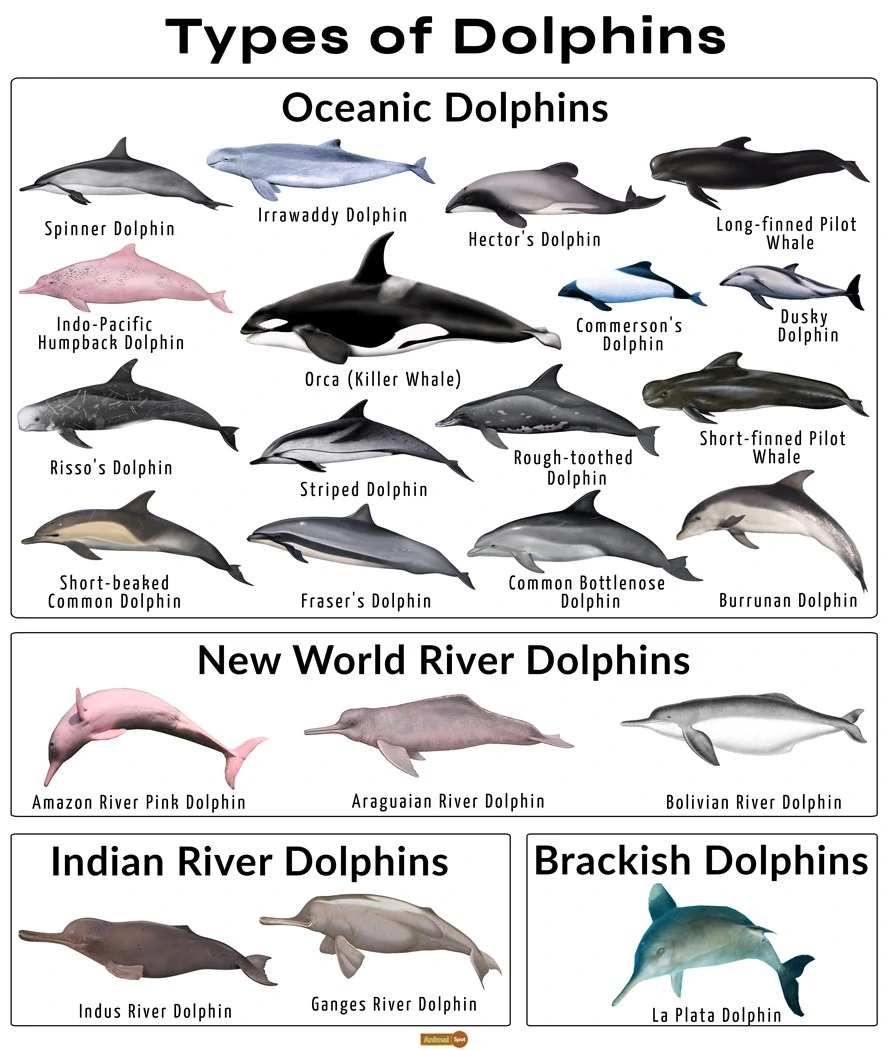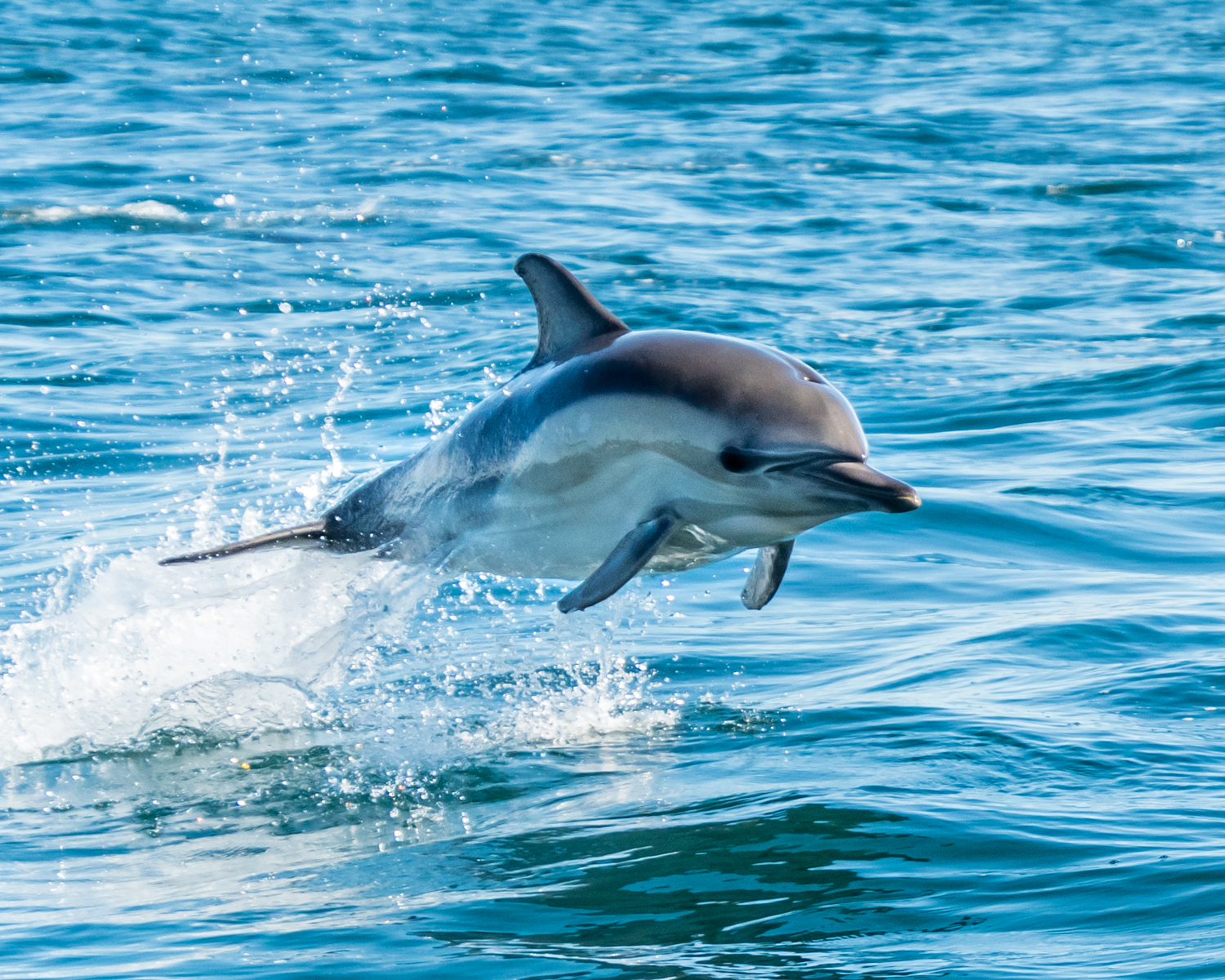Get Inspired by Dolphin Facts That Highlight Their Problem-Solving Talents
Get Inspired by Dolphin Facts That Highlight Their Problem-Solving Talents
Blog Article
Study the Ocean: Captivating Dolphin Facts for Sea Lovers
The world of dolphins provides a remarkable intersection of knowledge, social actions, and eco-friendly significance. From their complicated interaction approaches to their outstanding analytical capabilities, dolphins test our understanding of pet intelligence.
Dolphin Variety Variety
Variety is a hallmark of the dolphin family members, encompassing a variety of varieties that exhibit distinctive physical features, behaviors, and environments. The family members Delphinidae, commonly called nautical dolphins, comprises roughly 37 varieties, each adjusted to particular environmental particular niches. As an example, the bottlenose dolphin (Tursiops truncatus) is renowned for its intelligence and convenience, flourishing in both open and seaside sea settings.
In contrast, the whale (Orcinus orca), frequently referred to as the awesome whale, is the biggest participant of the dolphin family members and is identified by its striking black-and-white pigmentation. Orcas demonstrate complex social frameworks and searching methods, showcasing the behavioral diversity within the family. Other species, such as the spinner dolphin (Stenella longirostris), are noted for their acrobatic screens and choice for warmer waters, highlighting the adaptability of dolphins to various marine communities.
Additionally, river dolphins, including the pink river dolphin (Inia geoffrensis), occupy freshwater atmospheres, even more highlighting the wide-ranging habitats that dolphins occupy. Dolphin Facts. This amazing variety not only enhances marine environments however likewise highlights the significance of conservation initiatives to safeguard these impressive animals and their atmospheres
Social Actions and Interaction
The complex social habits and communication methods of dolphins are crucial components of their presence, facilitating team communication and boosting survival. These highly intelligent marine creatures display complicated social frameworks, typically forming cases that can range from a few people to over a hundred. Within these groups, dolphins take part in habits such as participating hunting, social play, and mutual protection, which cultivate solid bonds among participants.
Dolphins utilize an innovative array of articulations, including clicks, whistles, and body movement, to communicate details and reveal emotions. Their trademark whistles serve as special identifiers, akin to names, enabling people to call out to one another. This singing communication is matched by non-verbal signals, such as leaping, slapping the water, and synchronized swimming, which better improves their communications.

Special Feeding Routines
Unique feeding habits identify dolphins, showcasing their flexibility and knowledge in different marine settings. These aquatic mammals are recognized for their varied diet regimens, which mostly include fish, squid, and shellfishes. Their hunting techniques can differ significantly, often customized to the details victim and environmental problems.
One significant method is participating hunting, where dolphins function in groups to herd colleges of fish into limited formations, making it easier for people to capture their dish. This social behavior not just improves their feeding efficiency yet likewise reinforces social bonds within the shuck. Additionally, dolphins have actually been observed employing a method called "fish-whacking," where they use their tails to disorient or stun fish, facilitating less complicated capture.
One more remarkable feeding practice is echolocation, which permits dolphins to discover prey pop over to these guys even in dirty waters. By sending out sound waves and translating the returning mirrors, they can determine the size, form, and area of their targets. This amazing capacity underscores their versatility in numerous habitats, from superficial coastal locations to much deeper oceanic waters. In general, the one-of-a-kind feeding practices of dolphins highlight their role as experienced predators within the aquatic ecological community, demonstrating both knowledge and ingenuity.
Knowledge and Trouble Solving
Dolphins exhibit remarkable cognitive abilities that extend past their sophisticated feeding methods. Their intelligence is obvious in their analytic skills, social communications, and capability for understanding. Research study has actually shown that dolphins can utilize devices, such as utilizing aquatic sponges to secure their rostrums while foraging on the seafloor. This behavior highlights their capability to control their atmosphere successfully and adapt strategies to enhance survival.
In addition, dolphins show sophisticated communication skills, using an intricate system of clicks, whistles, and body language. Dolphin Facts. This interaction is vital for coordinating group activities, such as searching and interacting socially, illustrating their capacity to work collectively in the direction of a typical goal. Their capacity to comprehend abstract concepts, consisting of self-recognition in mirrors, even more emphasizes their cognitive sophistication
In regulated studies, dolphins have shown a capacity to resolve challenges and perform tasks that need both memory and crucial reasoning. These interactions show not only knowledge but additionally a determination to involve with their environment in novel ways. On the whole, the cognitive expertise of dolphins positions them among the most smart species on the world, cultivating a much deeper appreciation for their function in aquatic environments.
Preservation and Environmental Impact
Preservation initiatives intended at securing marine ecosystems are vital for maintaining dolphin populations and their environments. Dolphins are very sensitive to ecological changes, and their survival is elaborately connected to the health of oceanic environments. Overfishing, pollution, and climate modification pose considerable threats to both dolphins and their atmospheres.
Overfishing interrupts the food web, bring about a decline in victim types crucial for dolphin survival. Toxins such as chemicals and plastics gather in aquatic settings, endangering dolphins with intake and bioaccumulation. Increased water temperatures and ocean acidification, repercussions of environment change, further jeopardize the delicate balance of marine communities, affecting dolphin reproduction and migratory patterns.
Preservation campaigns, consisting of the establishment of marine secured areas (MPAs), play an important function in securing these smart animals. MPAs aid minimize human influence, enabling ecological communities to flourish and recover. Public awareness projects and area involvement are likewise vital, promoting a culture of stewardship towards aquatic life. By focusing on conservation efforts, we can ensure that future generations enjoy the appeal and vigor of dolphins and the oceans they live in. Securing aquatic environments is not almost saving dolphins; it is about preserving the intricate internet of life that sustains all of us.
Verdict
Dolphins exhibit the intricacy and richness of aquatic life via their diverse species, detailed social frameworks, and advanced cognitive capacities. Their special feeding behaviors and communication approaches even more highlight their flexibility and intelligence. As crucial components of aquatic communities, dolphins underscore the need of ongoing preservation initiatives to secure use this link their habitats. Protecting these amazing animals is necessary not only for their survival but likewise for keeping the health and balance of sea atmospheres globally.
Other varieties, such as the rewriter dolphin (Stenella longirostris), are kept in mind for their acrobatic display screens and preference for warmer waters, highlighting the adaptability of dolphins to different aquatic communities.
Overall, the special feeding behaviors of dolphins highlight their function as knowledgeable killers within the marine ecosystem, showing both knowledge and ingenuity.
Overall, the Bonuses cognitive prowess of dolphins places them amongst the most intelligent varieties on the world, cultivating a deeper appreciation for their duty in aquatic environments.

Report this page